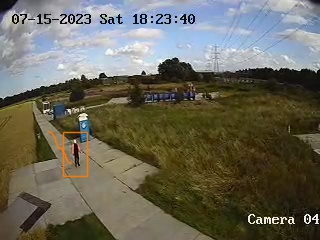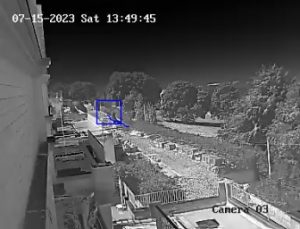CCTV Analytic Detection vs. PIR Detection
In an era where security concerns are paramount, choosing the right surveillance system for your property is crucial. Two popular options available in the United Kingdom are CCTV (Closed Circuit Television) analytic detection and PIR (Passive Infrared) detection systems. Each has its own set of advantages and limitations, and the choice between them depends on your specific needs and preferences.
CCTV Analytic Detection
CCTV analytic detection involves the use of advanced software and algorithms to analyse video footage in real-time. Here are some key points to consider:
Precision:
CCTV analytic detection offers a high level of precision in identifying and tracking objects. It can differentiate between people, vehicles, and animals, reducing false alarms.
Customisation
These systems can be customized to trigger alerts for specific events, such as unauthorized entry or motion in restricted areas.
Remote Monitoring
With internet connectivity, you can monitor your CCTV system remotely, allowing you to check on your property from anywhere in the United Kingdom or even abroad.
Integration:
CCTV analytic systems can often be integrated with other security measures like access control systems or alarms, providing a comprehensive security solution.
Cost:
While CCTV analytic systems offer advanced features, they tend to be more expensive to install and maintain compared to PIR detectors.

PIR Detection
PIR detectors, on the other hand, are motion sensors that detect changes in infrared radiation. Here’s what you need to know about them:
Simplicity
PIR detectors are simple and cost-effective. They work by sensing heat and movement, making them reliable for detecting human and animal motion.
Low False Alarms
PIR detectors are less prone to false alarms caused by environmental factors like rain, snow, or moving foliage.
Energy Efficiency
PIR sensors are energy-efficient because they only activate when motion is detected, conserving power when not in use.
Ease of Installation
These detectors are relatively easy to install, making them a popular choice for residential properties in the UK.
Limited Detail
PIR detectors do not provide the level of detail and object recognition that CCTV analytic systems offer. They primarily trigger an alarm when motion is detected.
Choosing the Right System
The choice between CCTV analytic detection and PIR detection depends on your specific security needs and budget. Here are some factors to consider:
Property Type: For high-security areas or commercial properties, CCTV analytic systems may be more suitable due to their advanced capabilities.
Budget: PIR detectors are a cost-effective choice for many residential properties and smaller businesses.
Integration: Consider whether you want your security system to integrate with other devices or services.
Remote Monitoring: If remote monitoring is essential to you, CCTV analytic systems offer more flexibility.
In conclusion, both CCTV analytic detection and PIR detection have their merits, and the choice depends on the unique requirements of your property. Whether you prioritize precision and customization or simplicity and cost-efficiency, there’s a security solution that suits your needs in the United Kingdom. Assess your needs carefully and consult with security professionals if necessary to make an informed decision for your peace of mind.












